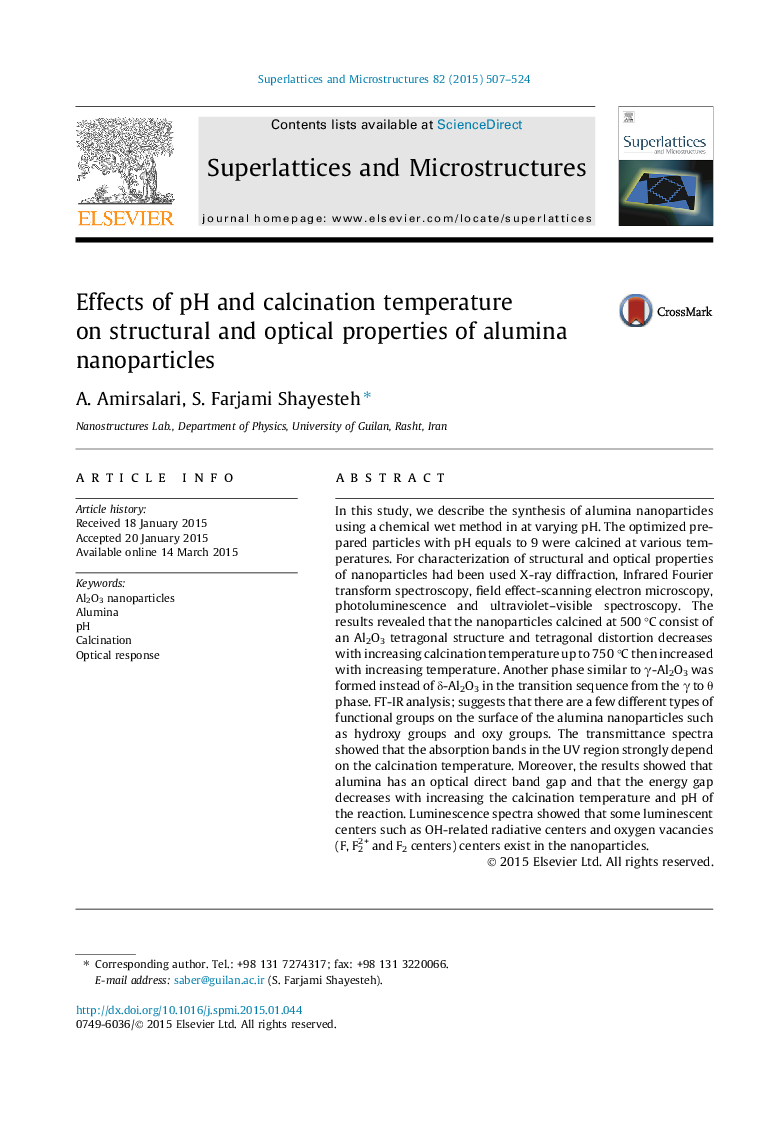| کد مقاله | کد نشریه | سال انتشار | مقاله انگلیسی | نسخه تمام متن |
|---|---|---|---|---|
| 1553233 | 1513219 | 2015 | 18 صفحه PDF | دانلود رایگان |

• The alumina nanoparticles were synthesized using a chemical wet method at varying pH.
• The optimized particles with pH equal to 9 were calcined at various temperatures.
• The UV spectra showed absorption bands strongly depend on calcination temperature.
• Similar to γ-Al2O3 phase formed instead of δ-Al2O3 in transition from γ to θ phase.
• Luminescence spectra showed some luminescent centers exist in the nanoparticles.
In this study, we describe the synthesis of alumina nanoparticles using a chemical wet method in at varying pH. The optimized prepared particles with pH equals to 9 were calcined at various temperatures. For characterization of structural and optical properties of nanoparticles had been used X-ray diffraction, Infrared Fourier transform spectroscopy, field effect-scanning electron microscopy, photoluminescence and ultraviolet–visible spectroscopy. The results revealed that the nanoparticles calcined at 500 °C consist of an Al2O3 tetragonal structure and tetragonal distortion decreases with increasing calcination temperature up to 750 °C then increased with increasing temperature. Another phase similar to γ-Al2O3 was formed instead of δ-Al2O3 in the transition sequence from the γ to θ phase. FT-IR analysis; suggests that there are a few different types of functional groups on the surface of the alumina nanoparticles such as hydroxy groups and oxy groups. The transmittance spectra showed that the absorption bands in the UV region strongly depend on the calcination temperature. Moreover, the results showed that alumina has an optical direct band gap and that the energy gap decreases with increasing the calcination temperature and pH of the reaction. Luminescence spectra showed that some luminescent centers such as OH-related radiative centers and oxygen vacancies (F, F22+ and F2 centers) centers exist in the nanoparticles.
Journal: Superlattices and Microstructures - Volume 82, June 2015, Pages 507–524